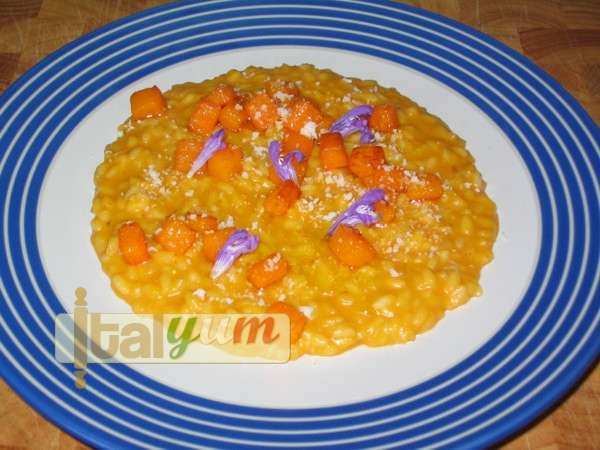
Federico’s butternut squash and sage risotto
In Italy we use “zucca” (pumpkin), the short and large variety with thick green skin and an uneven surface, but I live in Scotland now and the best practical approach is to buy a butternut squash at the supermarket. The risotto came out very well and everybody in the family enjoyed it. This recipe requires some multitasking skills because you need to roast part of the butternut squash while you are doing the rest of the ingredient preparation. Then, during the actual risotto making, 5 minutes before the final garnishing and serving, you will need to sauté some diced butternut squash. It is therefore important you master the basic risotto first, unless you are a seasoned cook of course. My best advice is to look at the "parmigiana risotto" recipe I published in the past. Try the Parmigiana risotto a few times and when the procedure becomes familiar, then you can commit yourself to this new one. At the time I made the recipe (14th June 2011) the sage in my garden was at its best so I have decided to infuse the risotto with sage leaves and to garnish the final dish with sage flowers, which are edible, but about this claim I recommend you check in the internet for the sake of safety and clarity. Note: in the following directions, I will not go into detail about risotto overall cooking time, stock addition and other tips. For this, please refer to the basic "parmigiana risotto" recipe featured in the risotto section of the website.
Equip your kitchen – Available at Amazon now
Clicking on equipment pictures takes you to Amazon where you can buy the items. We get a small revenue share of anything you buy which helps keep the site running.
Ingredients
- 400 grams (12-14 oz) Arborio rice
- 100 grams (4 oz) Butter (separate in two 25 g knobs and one 50 g knob)
- 1 Onion, medium size (finely chopped)
- 100 ml (3 1/2 fl oz) White wine
- 2 litres Vegetable stock (I have used vegetable bouillon)
- 1 Butternut squash
- 2-3 Sage leaves
- 50 grams (2 oz) Parmesan cheese (grated)
- Salt and pepper for seasoning
- Some sage flowers for the final garnish
Instructions
- First thing first, pre-heat the oven to 200°C (395°F). Then, divide the butternut squash in two parts. Take the bottom part (the wider one), remove the skin, cut it in half, remove the seeds and slice it.
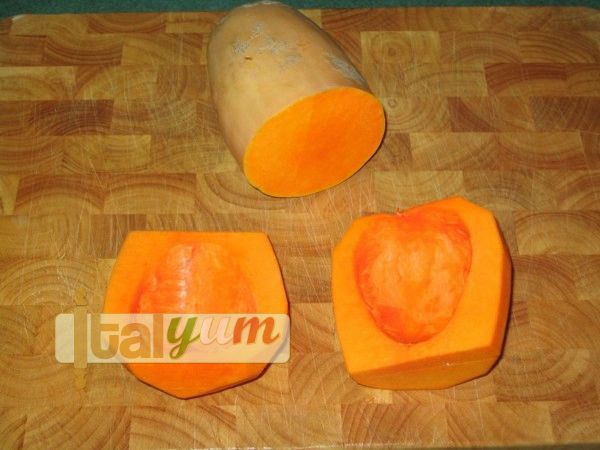
- Take an oven tray, line the tray with baking paper and place the squash slices onto it. In a small pan, melt 25g (3/4 ounce) of butter and brush all the slices with the melted butter. Keep the remaining butter, because you will be using it for the sauté of the diced squash at a later stage.
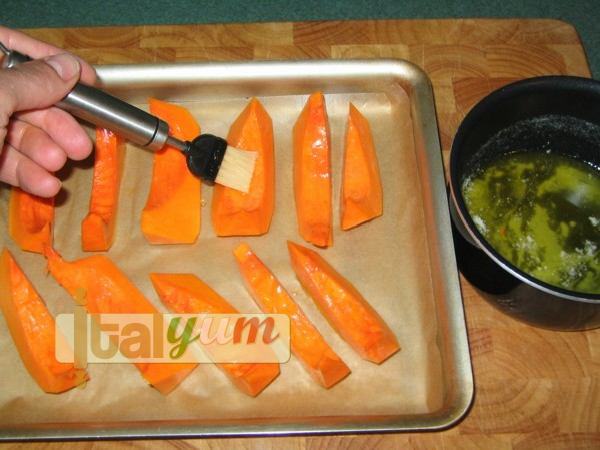
- Roast the squash for about 20-25 minutes, until it is soft (it is ready when a fork goes through the flesh with no resistance). While you are waiting for the squash to be roasted, prepare the vegetable stock and carry on with the rest of the ingredient preparation (chop the onion, grate the cheese etc.).
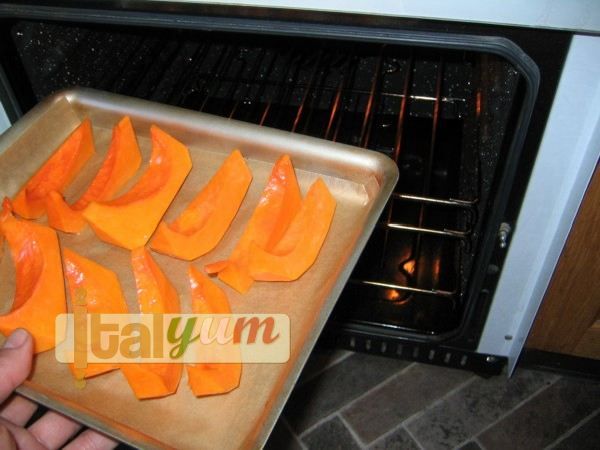
- I have used a fan assisted oven and my slices were ready after 25 minutes.
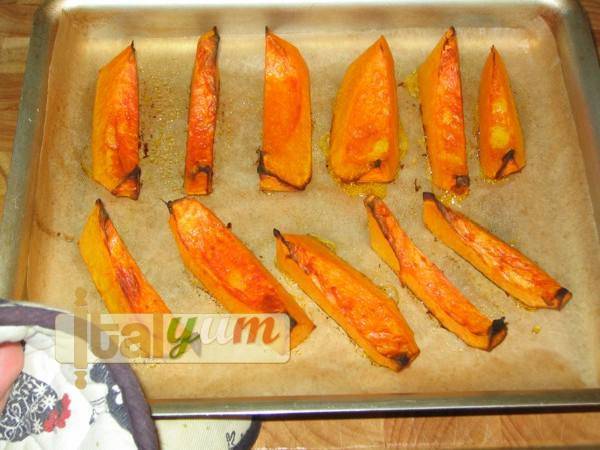
- Now, we are going to make a squash purée. Using a scissor, or a pairing knife, remove the charred tips from the squash slices. Put the slices into a jug and add a ladle of stock.
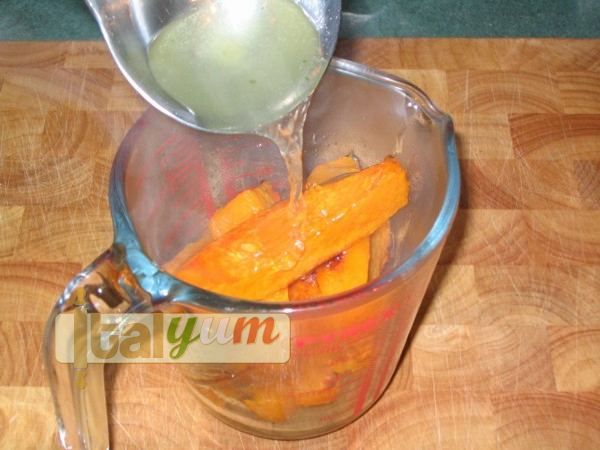
- Blend.
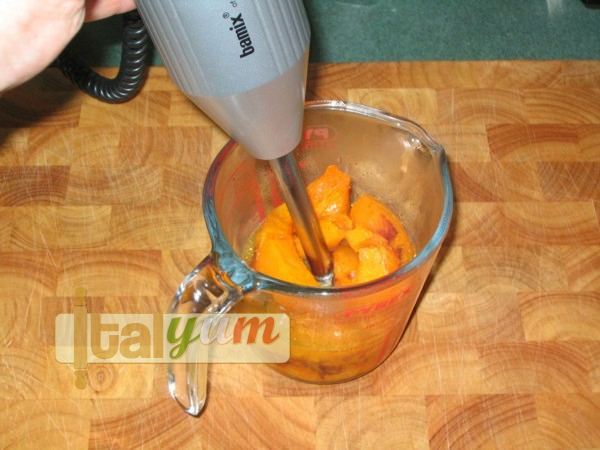
- The purée should be smooth and not have any trace of dark bits. Cover with cling film and set aside.
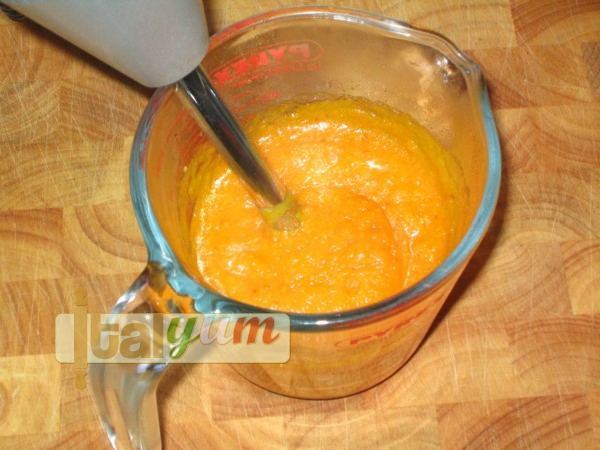
- Now, take the top part of the butternut squash (the narrow one), remove the skin and cut out few rectangles, roughly 6-8 mm (1/4" – 1/3").

- From the rectangles, cut out sticks (batons).
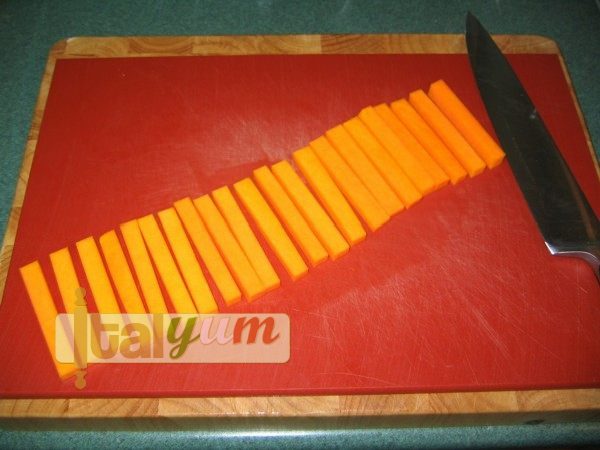
- Finally, from the sticks, cut into dice. Aim for dice of equal size with sides length of about 6-8 mm (1/4" – 1/3").
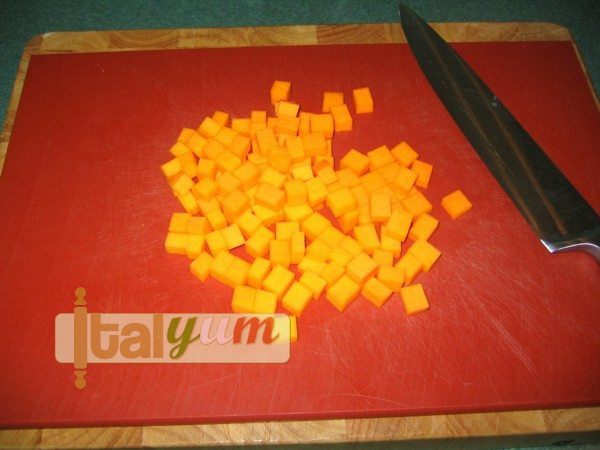
- Put the diced butternut squah into a bowl, cover and set aside.

- Now, we start to make the risotto. Melt 50g (2 ounces) of butter in a large pan. Add the finely chopped onion and sweat over a medium heat for about 3-5 minutes or until the onion is soft.

- Add the rice.

- Stir until the rice is completely coated with the butter. You can see that the rice will start to become translucent. Keep stirring and sweat the rice for a minute or two.
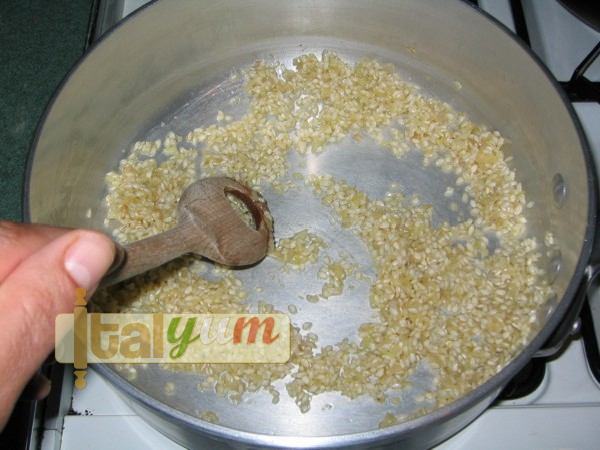
- Then, add the white wine.
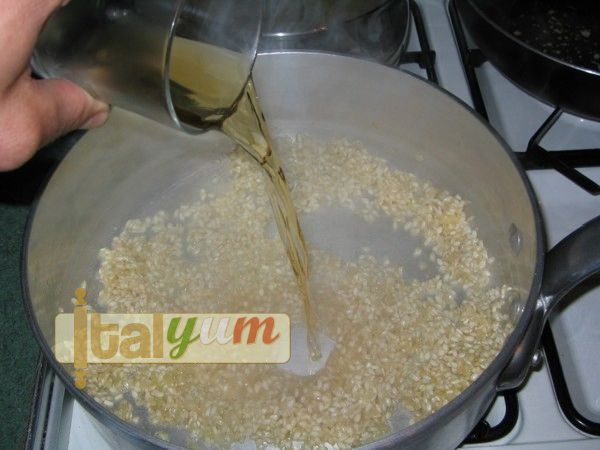
- Keep stirring and let the wine evaporate (it will probably take a couple of minutes).
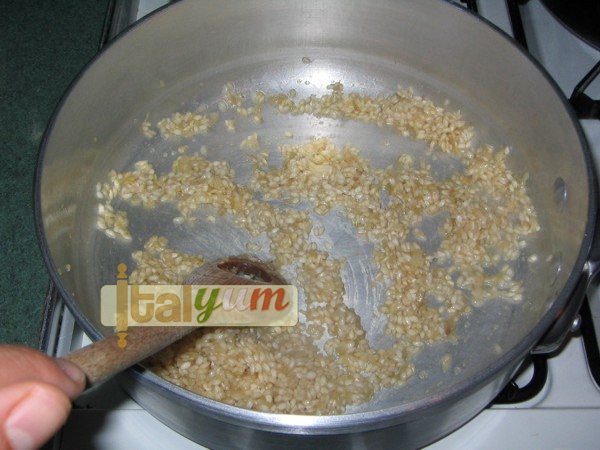
- Add the hot vegetable stock, a ladleful at a time. Stir regularly and add more stock as the rice absorb the liquid. Carry on this way until the rice is cooked.
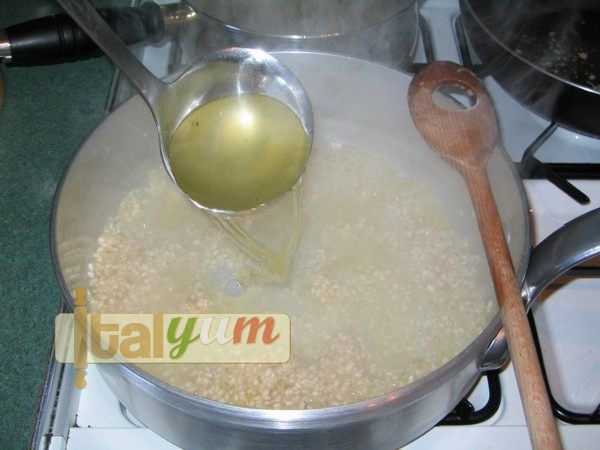
- Meanwhile, after the second addition of stock, add the squash purée.

- Stir to evenly mix the purée with the rice.
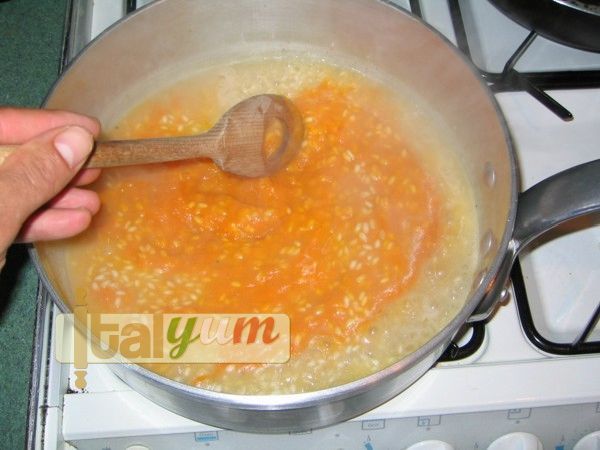
- Add two or three sage leaves to infuse the risotto (remove and discard the leaves after about 10 minutes).
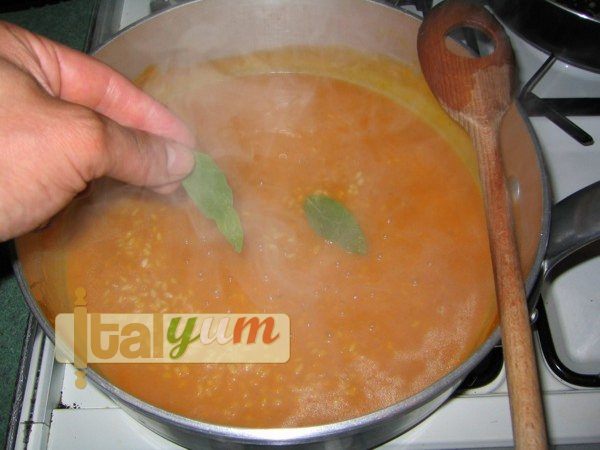
- Continue cooking the risotto, stirring regularly and adding stock when required.

- If you are familiar with the risotto making, you will know when it is about 5 minutes from being perfectly cooked. So, 5 minutes before the end, use the butter you have kept aside when brushing the squash slices and sauté the squash dice.
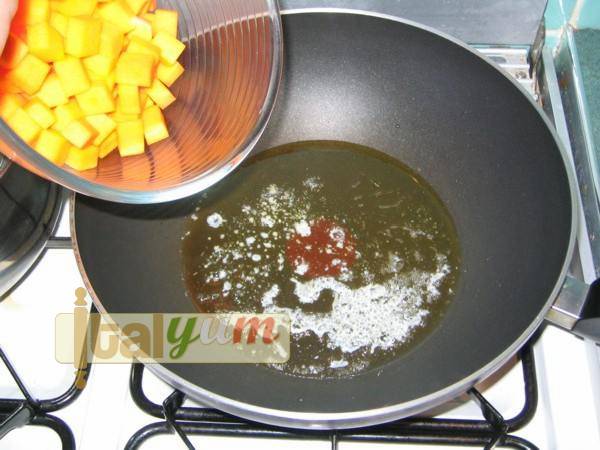
- The aim here is to soften and colour the squash dice, which will be used for the final garnishing of the risotto. It should take no more than 5 minutes.
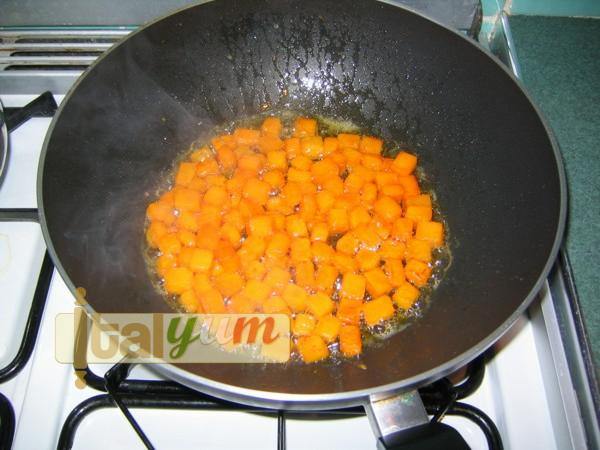
- The sauté also caramelise the dice surface, bringing out flavour and enhancing sweetness. My advice is not to season the dice at all; to retain the squash's original flavour.
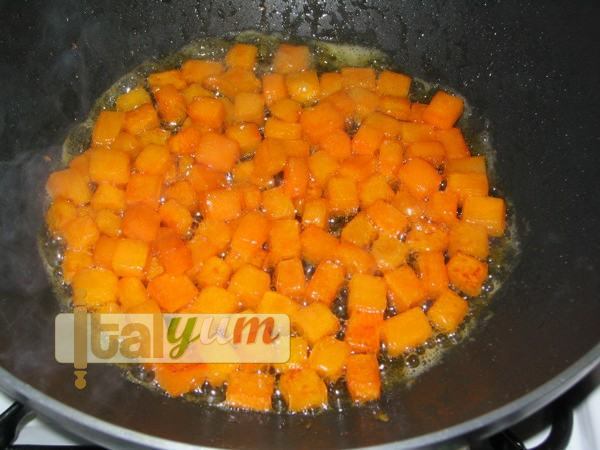
- Near the final stage of the risotto making, check the seasoning and add salt and pepper according to taste (watch the salt because we are going to add some Parmesan cheese soon, which is salty).
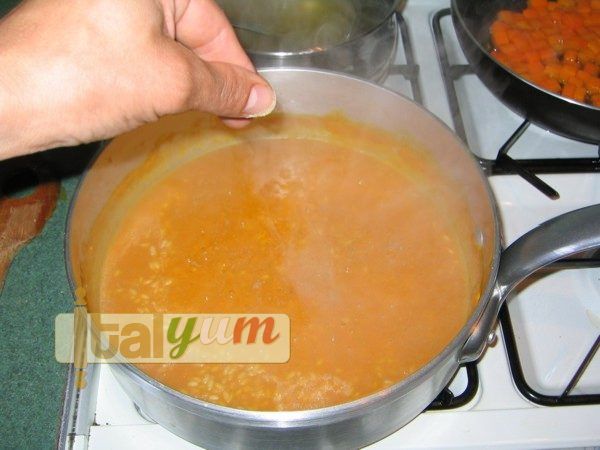
- When the rice is perfectly cooked ”al dente”, add the Parmesan cheese and stir for few seconds.
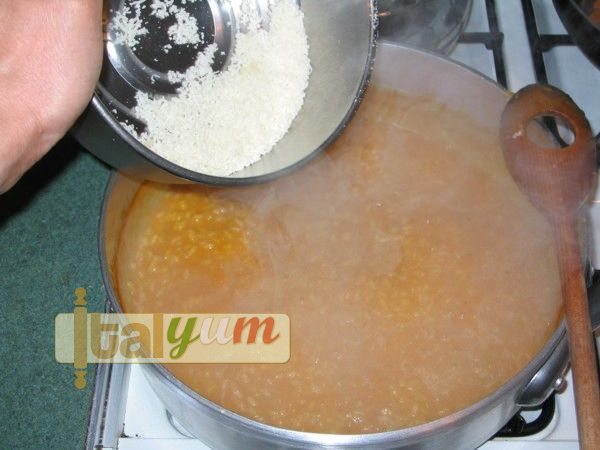
- Then, off the fire, add all the remaining butter (you should still have about 25g – 3/4 ounce of butter left) and stir until completely melted.
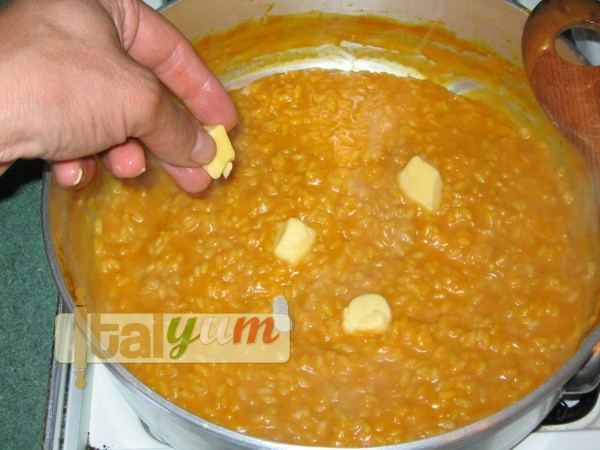
- Quickly stir, to complete the melting of the butter (this stage is called “mantecatura”) and cover the pan with a lid for about 1 minute, allowing the risotto to rest before serving it.
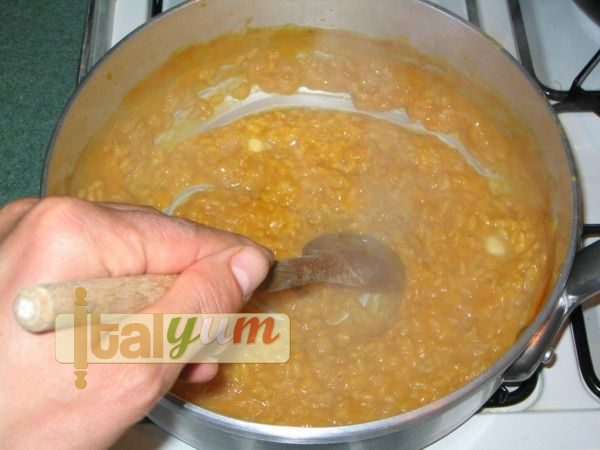
- Risotto should be served "all'onda" (like a wave). This means that when you serve it onto a plate, it should still flow a little. Garnish with squash dice and sage flowers. Alternatively, instead of the sage flowers, you could use a couple of fried sage leaves (see the "salvia fritta" recipe featured in the specials section of the website) with one Parmesan chip in the centre.
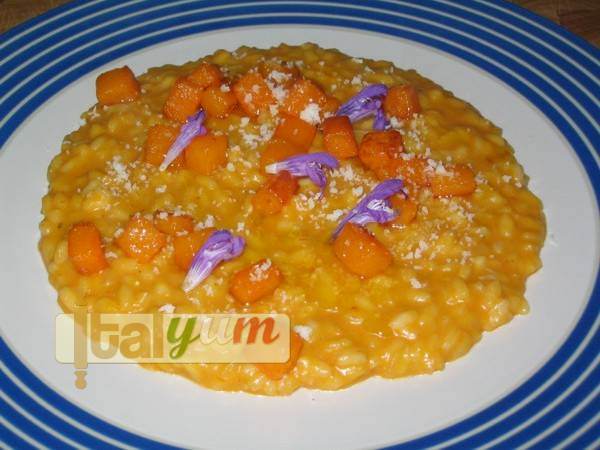
Nutrition
Calories: 650kcal
Tried this recipe?Let us know how it was!



